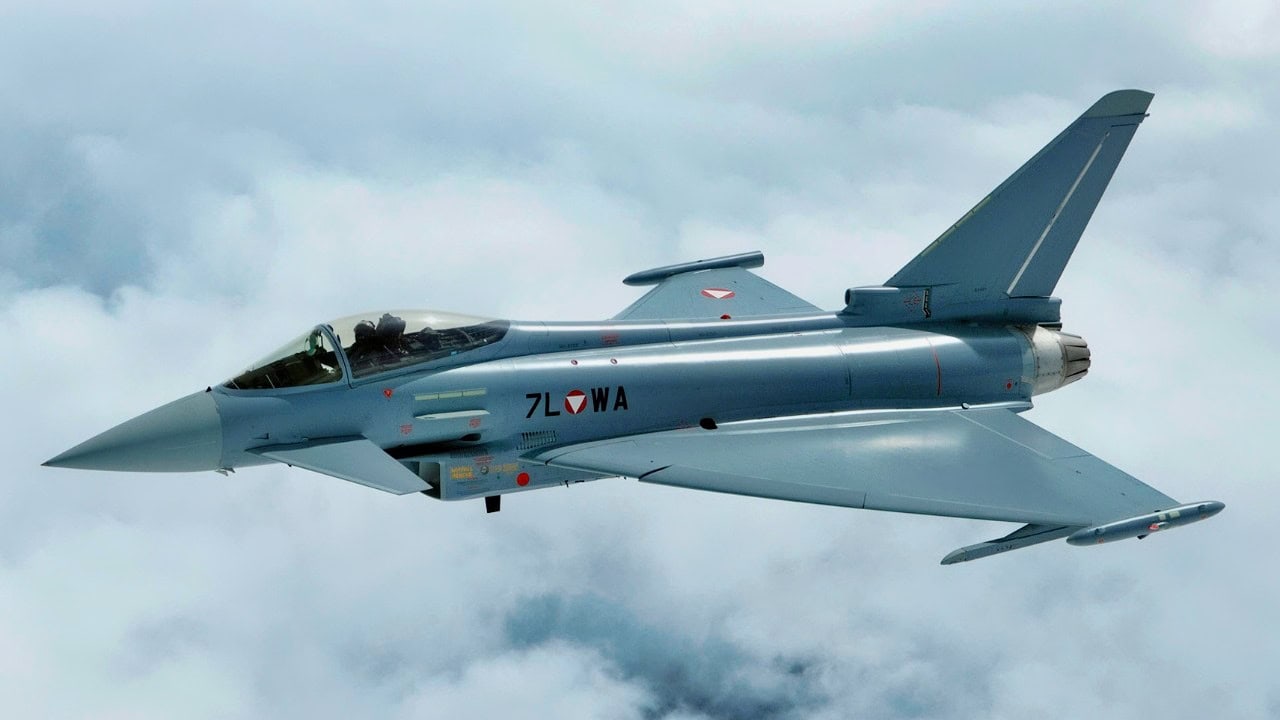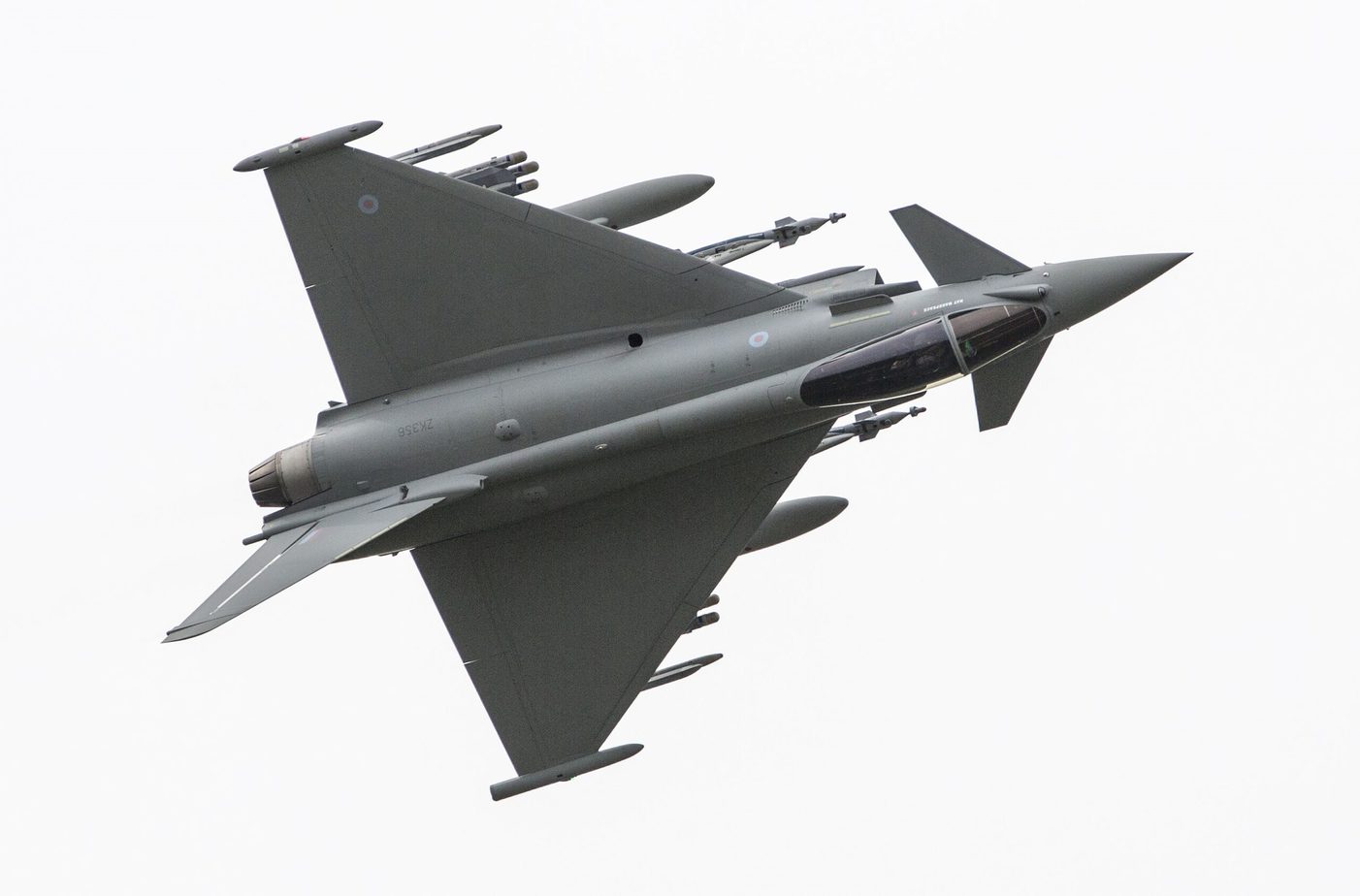Key Points and Summary: Germany’s Eurofighter Typhoon has taken a major leap forward with the integration of the Meteor long-range missile, boasting a 124-mile reach.
-This upgrade enhances its deterrence against Russian air incursions, making it a formidable force for NATO.
-The Typhoon, already known for its speed, maneuverability, and multi-role capabilities, now has a missile that allows it to engage threats from greater distances.
-As NATO strengthens its air policing efforts, the Meteor-equipped Typhoon ensures better homeland defense and air superiority.
-More allies are expected to follow Germany’s lead in adopting the Meteor, reinforcing European air power amid rising tensions with Russia.
Eurofighter Typhoon Increases Its Worth with Long-range Meteor Missile
The Eurofighter Typhoon is a versatile fighter that allows some NATO partners to take on air policing and homeland defense roles. However, the Eurofighter Typhoon is getting a shot in the arm with a new long-range air-to-air missile that will make it more deadly during a dogfight if that need ever arises.
Last month, Germany tested an MBDA Meteor missile launched from a Eurofighter for the first time.
The test happened at a British base in Scotland because Germany lacked the infrastructure to conduct such a long-range test. Germany is quite experienced with its Eurofighters launching short and medium-range missiles. German Typhoon pilots can deploy IRIS-T heat-seeking missiles and AMRAAMs. The Meteor allows the Germans to engage enemy fighters, drones, and ballistic missiles from further distances.
“This means we can protect ourselves better because targets can be attacked from a great distance and cannot get so close to us. Meteor is therefore also a great asset in terms of deterrence,” the German Air Force said.
This new capability will put the Russian Air Force on notice that it better stay out of the range of German Eurofighter Typhoons.
More About the Meteor
The Meteor is 12 feet long and 418 pounds. Ground crews will likely strain themselves with the big weapon, but their extra work will be worth it. The Meteor has a range of 124 miles, the primary selling point of the missile. The Dassault Rafale, the JAS 39 Gripen, and the F-35 can also carry the Meteor.
What Do Partners Like About the Eurofighter Typhoon?
The best aspect of the Eurofighter Typhoon is its multi-mission swing role that allows it to perform offensive and defensive functions and toggle between mission sets of air superiority and ground strike within the same operation. It’s fast and maneuverable. There are radar-evading attributes. It has nice acceleration and a good rate of climb. The Typhoon has modern AESA (Active Electronically Scanned Array Radar). It can also handle multiple targets at the same time.
Protect the Homeland
The Eurofighter Typhoon and other fourth-generation jets like the F-16 are great for air policing and ensuring Russia does not encroach on a country’s Air Defense Identification Zone (ADIZ). All NATO members, especially those on Russian borders, should make sure they can scramble fighters in quick reaction to intercept adversarial airplanes flying into their ADIZs. The Typhoon and other jets like it are great for this defensive role, especially if they can deploy the Meteor someday. The Typhoon doesn’t need to be stealthy for this job, and its great thrust and ceiling make it a valuable warbird that will ensure adversaries stay out of ADIZs.
Lack of Stealthiness
It has increased levels of reduced radar cross-section—features that have been added over the years, but the Typhoon has limited stealth attributes. It’s more of a defensive fighter, but it can carry a significant number of weapons if it needs to dogfight or conduct ground strikes. It does lack complete stealthiness.
Meteor Long-range Missile Is the Answer
The Meteor will make the German Eurofighter Typhoon much more valuable. It may give the allied nations that fly it more confidence that the airplane could go up against Russian fighters successfully. Deterrence is important. Fear of certain weapons like the Meteor changes the aerial battle equation. The Eurofighter Typhoon will not just be able to conduct air policing, but it could be used in attack mode if conflict ever sparked between NATO and Russia.

Eurofighter Typhoon
Interoperability is a great strength. If NATO can coordinate the air policing role out of Brussels, it will make the job easier for making sure the ADIZs of NATO members on Russian borders are not encroached upon by Russian airplanes. Using the same airplane helps conduct this type of mission.
Collaboration among European countries in airplane manufacturing is beneficial for the community. This helps grow the defense industrial base of the partner nations and create jobs and economic development.
NATO is likely trying to find other countries who are willing to test the Meteor on their Eurofighters. Britain is likely the next air force to try it and British pilots could use the same facility in Scotland that the Germans used to test the Meteor. It is time the Europeans focus harder on airplanes that fly regularly and improve them with new weapons.
The stakes are high on the continent, and it will take a concerted effort to keep the Russians away from bordering countries that could see encroachment by Vladimir Putin’s air force.

Pictured is a Royal Air Force Typhoon FGR4 performing a display during the 2016 RIAT Royal International Air Tattoo.
About the Author: Dr. Brent M. Eastwood
Brent M. Eastwood, PhD is the author of Don’t Turn Your Back On the World: a Conservative Foreign Policy and Humans, Machines, and Data: Future Trends in Warfare plus two other books. Brent was the founder and CEO of a tech firm that predicted world events using artificial intelligence. He served as a legislative fellow for U.S. Senator Tim Scott and advised the senator on defense and foreign policy issues. He has taught at American University, George Washington University, and George Mason University. Brent is a former U.S. Army Infantry officer. He can be followed on X @BMEastwood.

